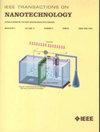A Review of Ising Machines Implemented in Conventional and Emerging Technologies
IF 2.1
4区 工程技术
Q3 ENGINEERING, ELECTRICAL & ELECTRONIC
引用次数: 0
Abstract
Ising machines have received growing interest as efficient and hardware-friendly solvers for combinatorial optimization problems (COPs). They search for the absolute or approximate ground states of the Ising model with a proper annealing process. In contrast to Ising machines built with superconductive or optical circuits, complementary metal-oxide-semiconductor (CMOS) Ising machines offer inexpensive fabrication, high scalability, and easy integration with mainstream semiconductor chips. As low-energy and CMOS-compatible emerging technologies, spintronics and phase-transition devices offer functionalities that can enhance the scalability and sampling performance of Ising machines. In this article, we survey various approaches in the process flow for solving COPs using CMOS, hybrid CMOS-spintronic, and phase-transition devices. First, the methods for formulating COPs as Ising problems and embedding Ising formulations to the topology of the Ising machine are reviewed. Then, Ising machines are classified by their underlying operational principles and reviewed from a perspective of hardware implementation. CMOS solutions are advantageous with denser connectivity, whereas hybrid CMOS-spintronic and phase-transition device-based solutions show great potential in energy efficiency and high performance. Finally, the challenges and prospects are discussed for the Ising formulation, embedding process, and implementation of Ising machines.传统和新兴技术中的伊辛机综述
作为组合优化问题(COPs)的高效且硬件友好的求解器,伊辛机受到越来越多的关注。它们通过适当的退火过程来搜索伊辛模型的绝对或近似基态。与采用超导或光学电路制造的伊辛机相比,互补金属氧化物半导体(CMOS)伊辛机具有制造成本低、可扩展性强、易于与主流半导体芯片集成等优点。作为低能耗且与 CMOS 兼容的新兴技术,自旋电子学和相位转换器件提供的功能可提高伊兴机的可扩展性和采样性能。在本文中,我们将探讨使用 CMOS、混合 CMOS-自旋电子和相位转换器件解决 COP 的工艺流程中的各种方法。首先,我们回顾了将 COP 表述为 Ising 问题以及将 Ising 表述嵌入 Ising 机器拓扑的方法。然后,根据其基本运行原理对伊辛机进行分类,并从硬件实现的角度进行评述。CMOS 解决方案在密集连接方面具有优势,而基于 CMOS-Spinronic 和相位转换器件的混合解决方案则在能效和高性能方面显示出巨大潜力。最后,还讨论了伊辛公式、嵌入过程和伊辛机的实现所面临的挑战和前景。
本文章由计算机程序翻译,如有差异,请以英文原文为准。
求助全文
约1分钟内获得全文
求助全文
来源期刊

IEEE Transactions on Nanotechnology
工程技术-材料科学:综合
CiteScore
4.80
自引率
8.30%
发文量
74
审稿时长
8.3 months
期刊介绍:
The IEEE Transactions on Nanotechnology is devoted to the publication of manuscripts of archival value in the general area of nanotechnology, which is rapidly emerging as one of the fastest growing and most promising new technological developments for the next generation and beyond.
 求助内容:
求助内容: 应助结果提醒方式:
应助结果提醒方式:


